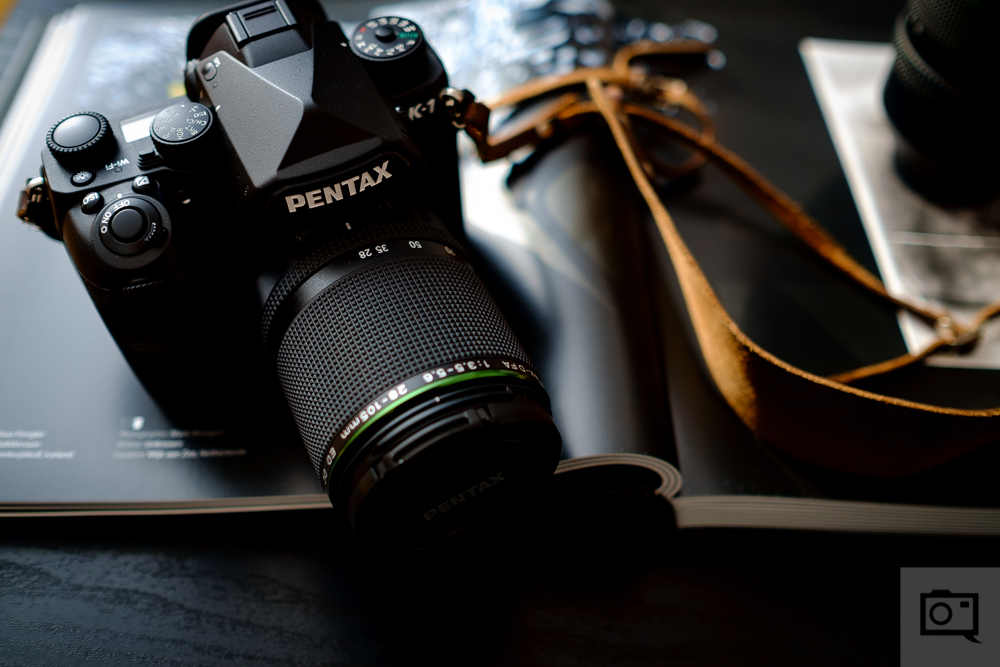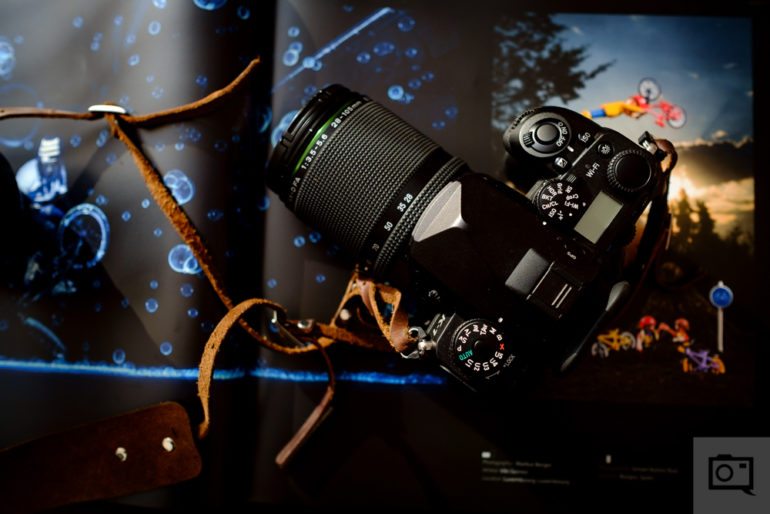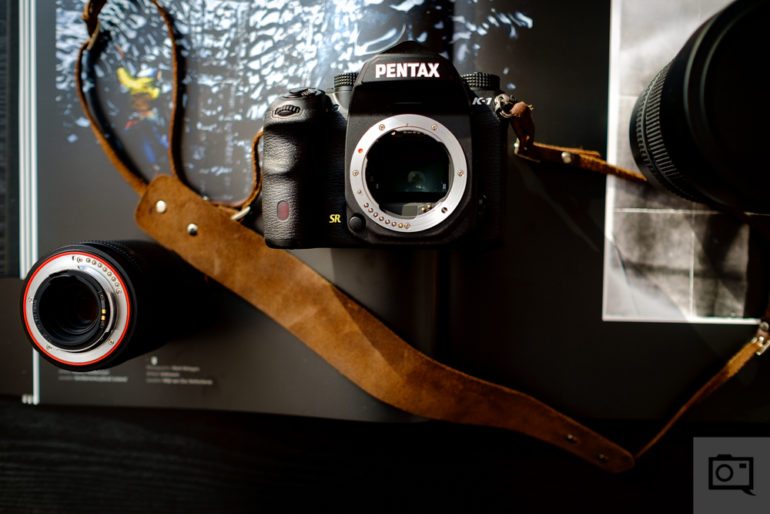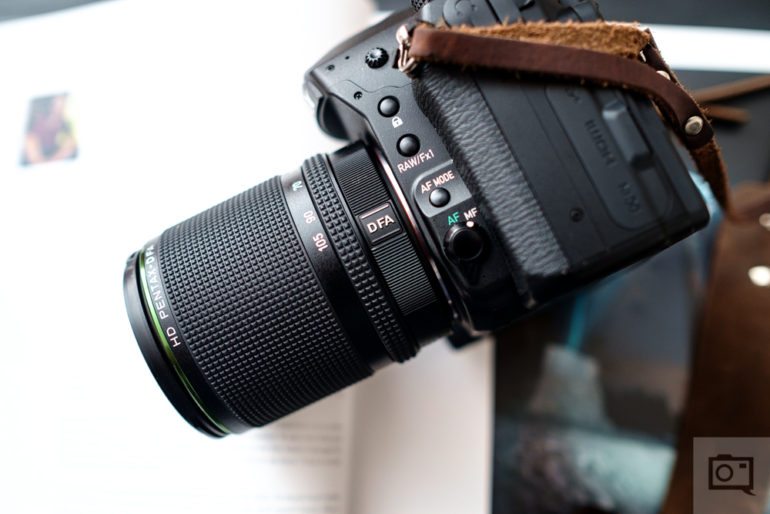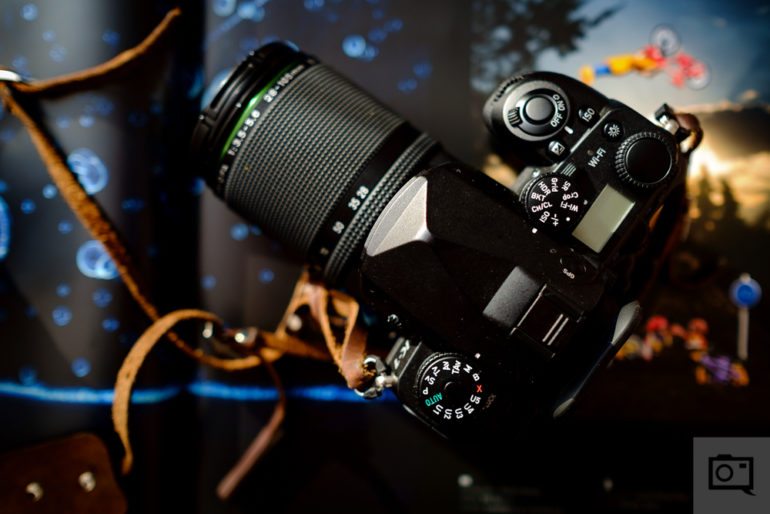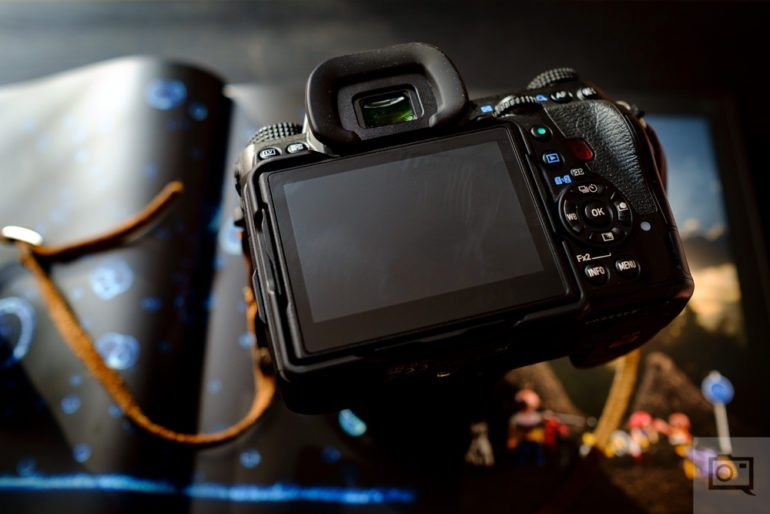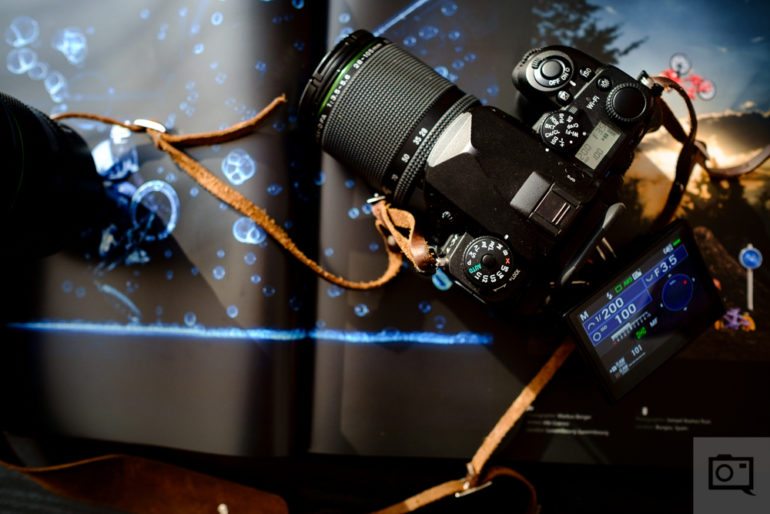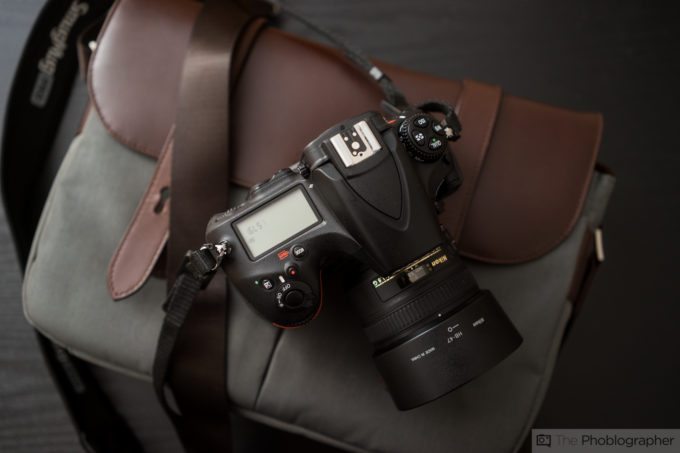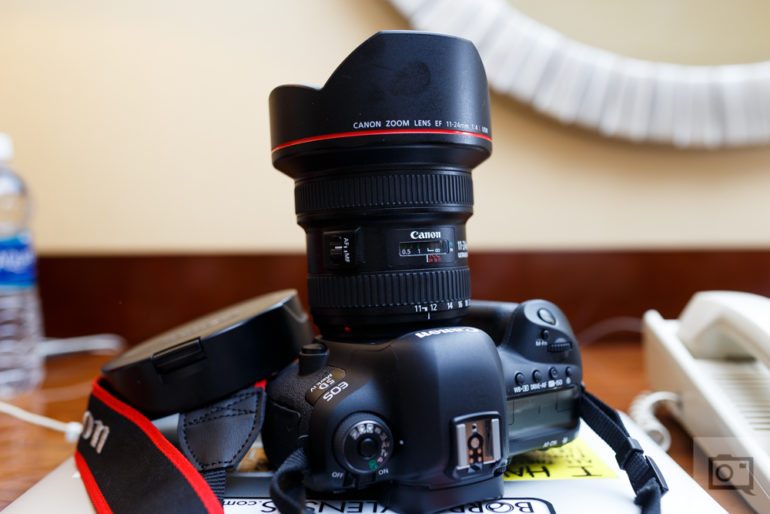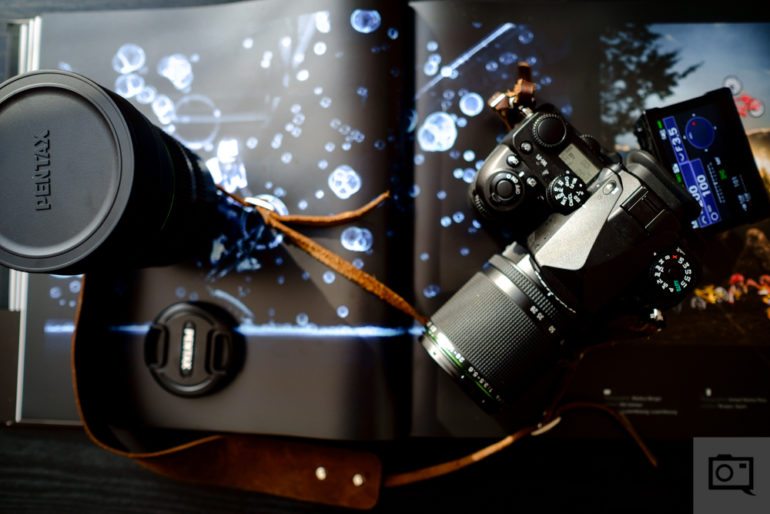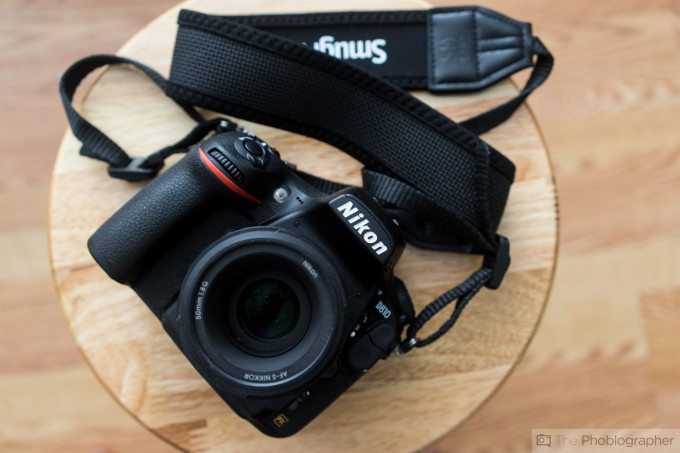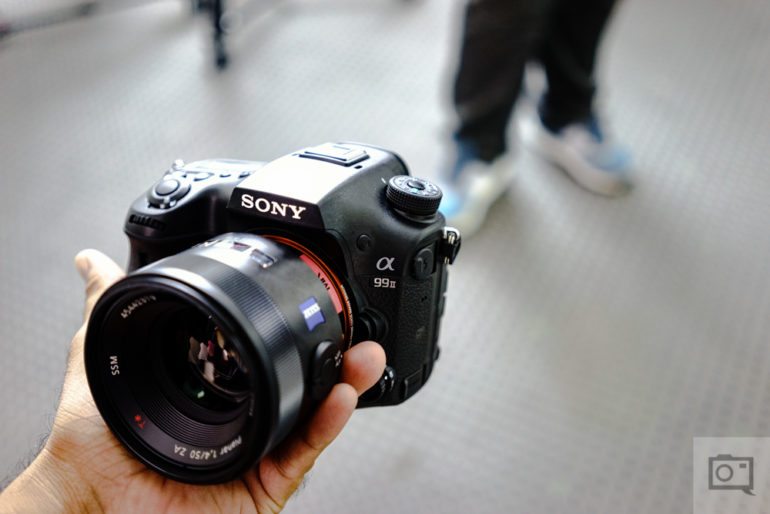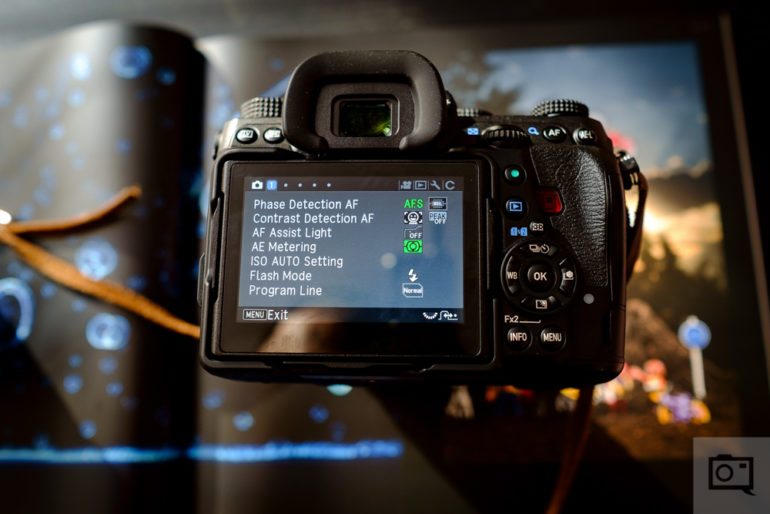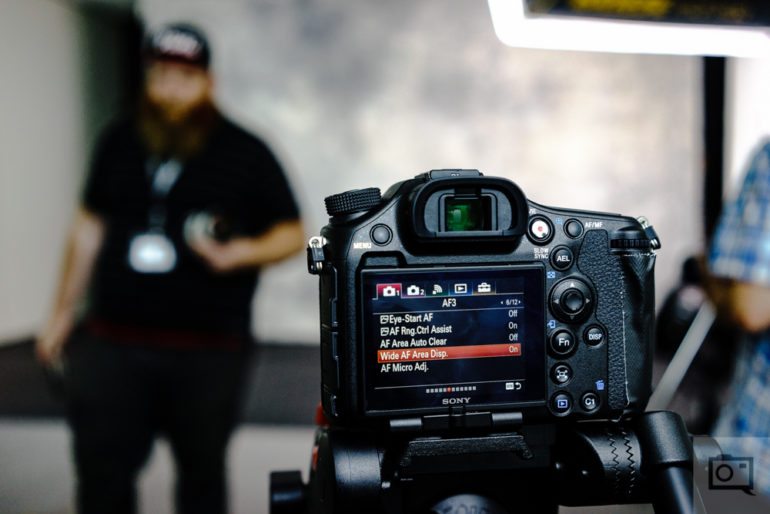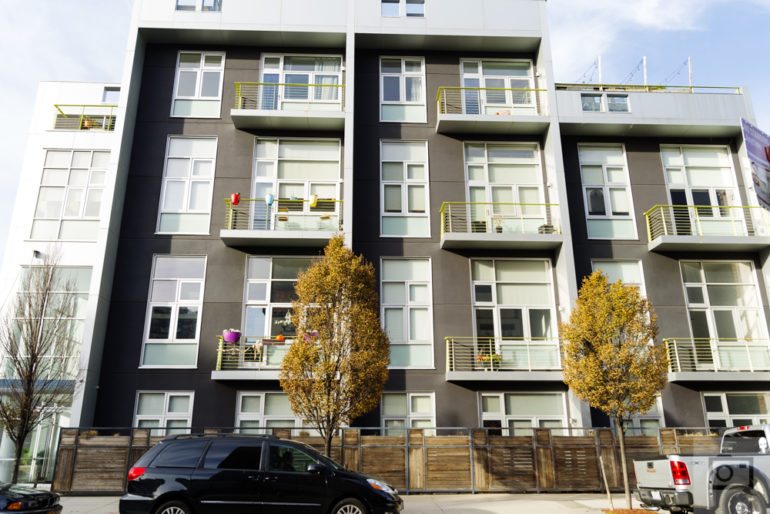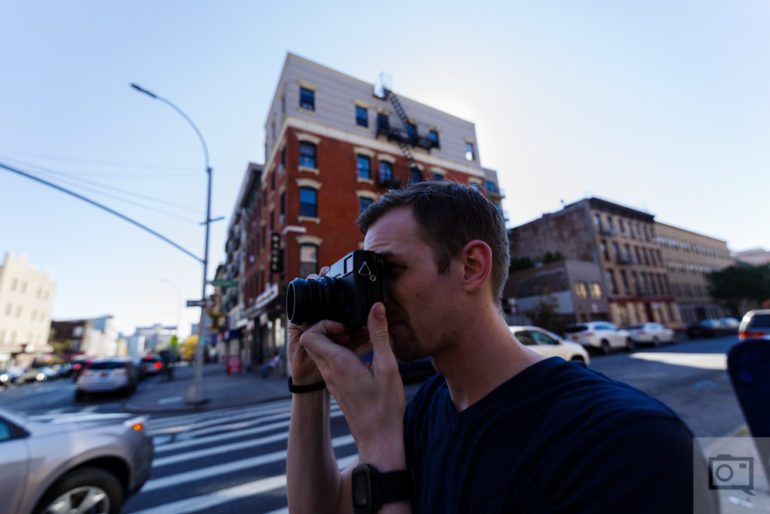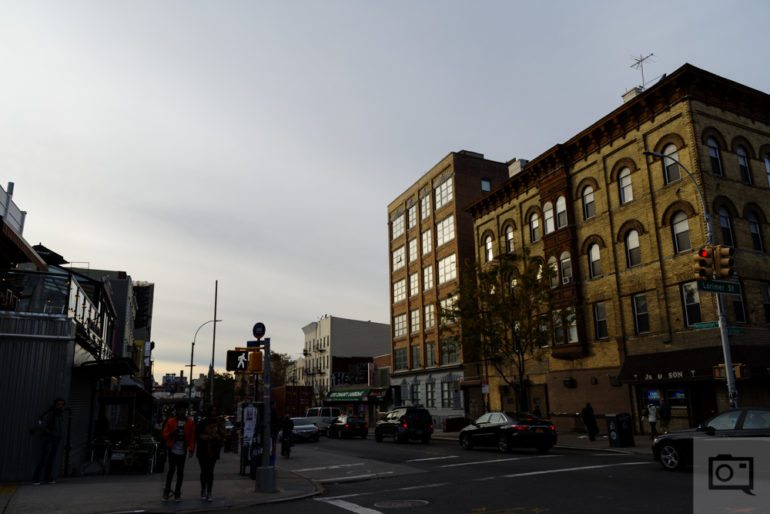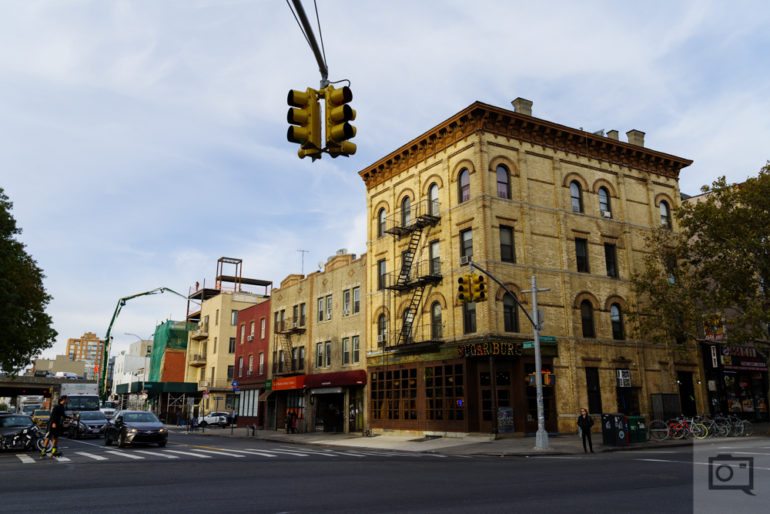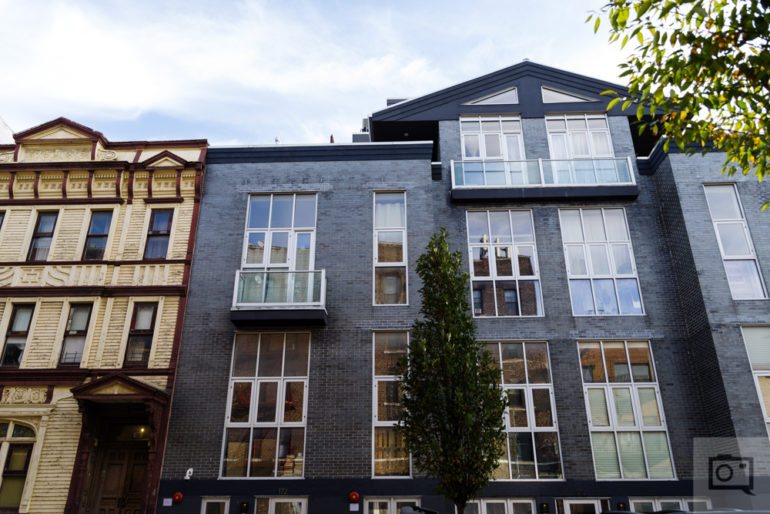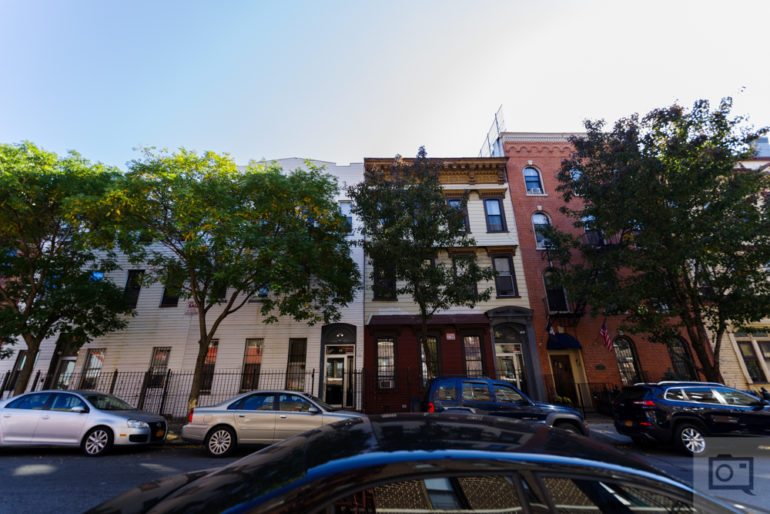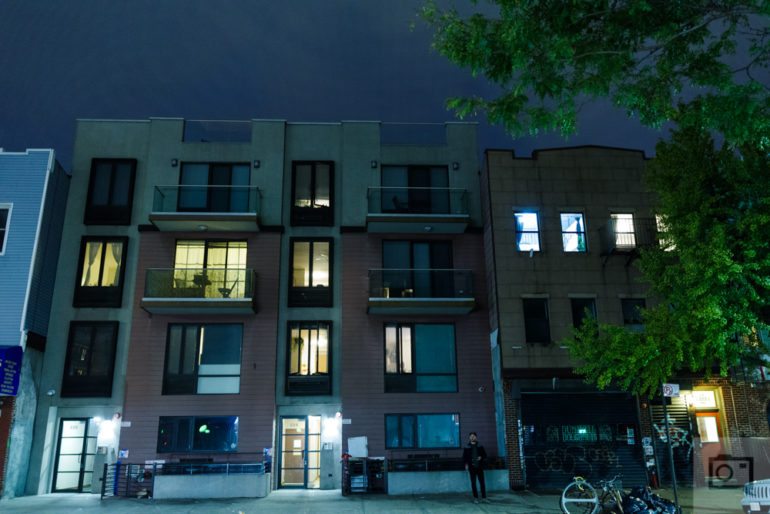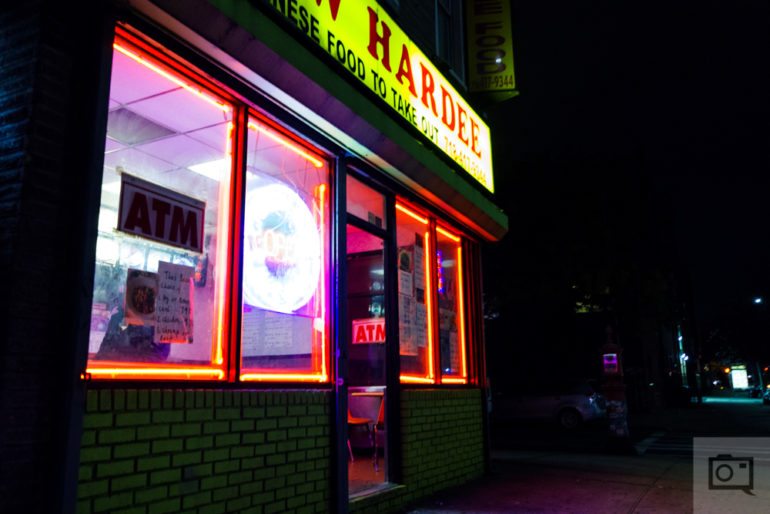The Pentax K-1 is a camera that is great in many ways. It offers features that Canon, Nikon and Sony just don’t in a full frame DSLR while also keeping the price point fairly modest. Pentax’s strategy for years was always to take professional grade features and bring them down to the consumer and enthusiast. For the most part, the Pentax K-1 does that. With cool things like Astrotracer, WiFi, Composition adjustment, and arguably the weirdest LCD screen in the industry, the K-1 is a camera that will suit the needs of most professional photographers when paired with the right lenses.
Sure, Pentax may not have the more extended dedicated flash and lens support that Canon, Nikon and Sony do (especially in TTL monolights)–but that doesn’t mean that it still can’t be a very capable camera in the hands of an experienced photographer.
Before I begin this review, I want to address the concerns of many readers over the past few years. Why haven’t we reviewed more Pentax gear? Well, it’s been kind of tough to get it. I generally also have a rule that due to how many new products come in each quarter of a year and we’ve got limited staffing and budget (I actually pay my writers EXTREMELY fairly), we tend to be a bit more selective about what we review. If Sony and Fujifilm get us a product faster, we’re going to hop on it. Further, Pentax fans in general tend to be very defensive. A few years back when we said we didn’t like a feature on a camera, we faced a DDoS attack from someone who actually threatened us in the comments way back when. I’ve always fostered a sense of truth into my staff, and we refuse to say anything that we don’t believe in. Even in our sponsored posts, we make it clear that the posts are sponsored unlike a large number of the other photography blogs out there that I’d be happy to name. Quite honestly, it’s illegal. I’ve spent nearly eight years building this relationship with all of you who come to this site, and I’m not about to throw a major hallmark of my 20s and career down the drain.
With all this out of the way, I’d like to continue some of my initial thoughts. Obviously, the Pentax K-1 should have been here years ago. Photographers clamored for it. But instead, Pentax went medium format. Granted, their 645 series sells very well and that makes sense. But I also think that they may have approached full frame in a questionable way.
Pentax has always been known for being different. And yes, there are a few new features here, but the camera doesn’t feel a whole lot different from the Canon, Nikon and Sony offerings. Yes, there are different features. But what I honestly wanted was a retro-style DSLR. Not like the Nikon Df that’s massive; but I genuinely believe that if Pentax has given us a full frame DSLR in almost the size of something like the K1000, every photography journalist in the world would have given it an automatic Editor’s Choice award for being so brave, different and refreshing. Could Pentax still do this? Sure; they’ve always had a strong enthusiast market.
But did they? No; at least not yet.
Pros and Cons
Pros
- Weather sealing
- Great, versatile image quality
- Composition adjustment is awesome for studio shooting on a tripod
- Fast autofocus in most situations
- Programmable dial is a very nice feature, and Pentax’s execution of it is quite unique and innovative
- Nice feel in the hand
Cons
- Viewfinder doesn’t let the autofocus points to be easily seen in some situations
- LCD screen sometimes feels like it’s going to break off
- I’d love a direct joystick to change the AF points like Canon, Nikon and Sony have vs pressing a button and then changing them.
Gear Used
The Pentax K-1 was tested with the Pentax 15-30mm f2.8, 28-105mm f3.5-5.6, and the Adorama Flashpoint Zoom LiOn flash system.
Tech Specs
Specs taken from the Pentax K-1 listing on the official website.
| SENSOR | Primary color filter, CMOS, Size: 35.9 x 24.0mm, Effective pixels: 36.40 MP, Total pixels: 36.77 MP Recorded resolution photo: [35mm Full Frame] JPG: L (36M): 7360×4912, M (22M): 5760×3840, S (12M): 4224×2816, XS (2M): 1920×1280 RAW: (36M): 7360×4912 Recorded resolution photo: [APS-C size] JPG: L (15M): 4800×3200, M (12M): 4224×2816), S (8M): 3456×2304, XS (2M): 1920×1280 RAW: (15M): 4800×3200 Movie (resolution/FPS): Full HD (1920×1080) @ 60i/50i/30p/25p/24p, HD (1280×720) @ 60p/50p Quality levels: Best, Better, Good, RAW (14-bit) PEF, DNG, RAW + JPEG |
| LENS MOUNT | Type/construction: PENTAX KAF2 bayonet mount (AF coupler, lens info contacts, K-mount w/ power contacts). Usable lens series: KAF3, KAF2 (power zoom compatible), KAF, KA mount lens |
| FOCUS SYSTEM | Type: TTL: Phase-matching autofocus Focus Sensor: SAFOX 12, 33 point (25 cross type focus points in the center) Brightness Range: EV -3 to 18 (ISO100 @ normal temperature) AF mode: Single AF (AF.S), Continuous (AF, C) AF point selection: Spot, Select, Expanded Area (S, M, L), Zone select, Auto (33AF Points) AF assist light: dedicated LED AF assist light |
| VIEWFINDER | Type: Pentaprism finder Coverage (field of view): 100% Magnification: approx. 0.70X (50mm F1.4 at infinity) Eye relief length: approx. 20.6mm (from the view window), Approx 21.7 mm (from the center of lens) Focusing screen: Natural-Bright-Matte III focusing screen Diopter adjustment: approx. -3.5m to +1.2m-1 Viewfinder overlay: AF Points, Grid Display, Electronic Level, AF Frame, Spot Metering Frame, Crop |
| LCD MONITOR | Type: wide viewing angle TFT color LCD, Air-gapless glass, Flexible tilt Size: 3.2 inch (3:2 Aspect) Resolution: 1037K dots Adjustment: brightness, saturation and colors adjustable Outdoor View Setting: adjustable ±2 step |
| LIVE VIEW | Type: TTL method using image sensor Focusing mechanism: Contrast detection (Face Detection, Tracking, Multiple AF points, Select, Spot), Focus peaking : On/Off Display: field of view approx 100%, magnified view (up to 16x), grid display (4×4 grid, golden section, scale display, square 1, square 2, grid color: black/white), histogram, bright area warning, composition adjustment |
| BUILT-IN GPS | Satellites: GPS, QZSS, SBAS (WAAS/EGNOS/GAGAN/MSAS) Reception frequency: L1 1575.42MHz Recorded information: latitude, longitude, altitude, time (UTC), direction Geodesics: World Geodetic System (WGS84) GPS logging: KML format, logging interval 5/10/15/30 sec./1min., logging duration: 1 24hr (Up to 9 hrs at logging Interval 5 sec, up to 18 hrs. at logging interval 10 sec.) |
| EXTERNAL FLASH | Flash modes: auto flash discharge, auto flash + red-eye reduction, flash on, flash on + red-eye reduction, slow speed sync, slow-speed sync + red-eye, P-TTL, trailing curtain sync, contrast-control sync*, high-speed sync*, wireless sync *Contrast-control-sync and high-speed sync requires 2 or more dedicated external flashes Sync speed: 1/200 sec., flash exposure compensation: -2.0~+1.0 EV |
| STORAGE MEDIA | Internal memory: n/a Dual card slot: sequential use, save to both, separate RAW/JPG, image copy between slots possible Removable memory: SD, SDHC and SDXC memory card (conforms to USH-I standards) |
| INTERFACES | Connection port: USB 2.0 (Micro B), external power supply terminal, external cable switch terminal, X-sync socket, HDMI output terminal (Type D), stereo microphone input terminal, headphone terminal USB Connection: MSC/PTP |
| WIRELESS LAN | Standard: IEEE 802.11 b/g/n Security: authentication, WPA2, Encryption: AES |
| POWER SUPPLY | Battery type: rechargeable lithium-ion battery D-LI90 AC Adapter: AC adapter kit K-AC132 (optional) Battery life: number of recordable images: approx 760, playback time approx 390 min. * With a fully-recharged rechargeable lithium-ion battery, tested in compliance with CIPA standard. Actual results may vary depending on the shooting condition. |
| PHYSICAL SPECIFICATIONS | Body dimensions approx. 5.37” (W) x 4.33”(H) x 3.37”(D) (excluding protrusions) Body Weight: 32.6oz (body only), 35.6oz (with battery and 1x SD card) Construction material(s): magnesium alloy shell over metal chassis Weather resistant: yes (87 special sealing parts) Operating temperature: 14-104°F (-10 to 40°C) |
| LANGUAGE SUPPORT | English, French, German, Spanish, Portuguese, Italian, Dutch, Danish, Swedish, Finnish, Polish, Czech, Hungarian, Turkish, Greek, Russian |
| IMAGE STABILIZATION | Type: sensor-shift shake reduction (SRII), 5-axis electronic level function: displayed in VF/LCD (Horizontal and vertical) Horizon correction: SR on: correction up to 1˚, SR off: correction up to 2˚ |
| METERING SYSTEM | Type: TTL open aperture metering using 86K pixel RGB sensor, multi-segment, center weighted and spot metering Range: EV-3 to 20 (ISO100 at 50mm F1.4) Exposure Mode: Scene Analyze Auto, Program, Sensitivity Priority, Shutter Priority, Aperture Priority, Shutter & Aperture Priority, Manual, Bulb, Flash X-sync Speed, USER1, USER2, USER3, USER4, USER5 EV compensation: ±5EV (1/2EV steps or 1/3EV steps can be selected) AE lock: button type (timer type: two times the meter operating time set in custom setting); continuous as long as the shutter button is halfway pressed |
| ISO SENSITIVITY | ISO AUTO/100 to 204800 (EV steps can be set to 1EV, 1/2EV or 1/3EV) |
| WHITE BALANCE | AUTO WB, Multi Auto WB, Daylight, Shade, Cloudy, Fluorescent Light (D: Daylight Color, N: Daylight White, W: Cool White, L: Warm White), Tungsten Light, CTE, Manual WB (up to 3 settings), Color Temperature Configuration (up to 3 settings), copying the white balance setting of a captured image Fine Adjustment: Adjustable ±7 steps on A-B axis or G-M axis |
| SHUTTER | Electronically controlled vertical-run focal plane shutter (electronic w/ Pixel Shift Resolution) Shutter speed: auto: 1/8000 to 30 sec., manual: 1/8000 to 30 sec. (1/3 or 1/2EV steps), Bulb |
| CAPTURE MODES | Custom image: Auto Select, Bright, Natural, Portrait, Landscape, Vibrant, Radiant, Muted, Flat, Bleach Bypass, Reversal Film, Monochrome, Cross Processing Cross Process: Random, Preset 1-3, Favorite 1-3 Digital filter: Extract Color, Replace Color, Toy Camera, Retro, High Contrast, Shading, Invert Color, Unicolor Bold, Bold Monochrome Clarity: adjustable ±4 steps Skin tone: Type 1/Type 2 HDR: Auto, HDR1, HDR2, HDR3, Advanced HDR, Exposure bracket value adjustable, Automatic composition correction function Lens Correction: distortion correction, peripheral illumin. correction, lateral correction, aberration correction, diffraction correction D-RANGE compensation: highlight correction, shadow correction Composition adjust: ±1.5mm up, down, left or right (1mm when rotated); 1 degree of range |
| DRIVE MODES | Mode selection Still image: single frame, continuous (H, M, L), self-timer (12s, 2s, continuous), remote control (0s., 3s., continuous), bracketing (2, 3 or 5 frames), mirror-up (possible to use with remote ctrl), multi-exposure (possible to use with continuous, self-timer or remote ctrl), interval shooting, interval composite, interval movie record, star stream Movie: remote control *bracketing, interval shooting, interval composite, interval movie record and star stream are possible to use with self-timer/remote control. Continuous shooting (approximates) [35mmFull Frame] Max. 4.4 fps, JPEG ( L: ★★★ at Continuous H): up to 70 fr., RAW: up to. 17 fr. Max. 3.0 fps, JPEG L: ★★★ at Continuous M): up to 100 fr., RAW: up to 20 fr. Max. 0.7 fps, JPEG ( L: ★★★ at Continuous L): up to 100 fr., RAW: up to 100 fr. [APS-C size] Max. 6.5 fps, JPEG ( L: ★★★ at Continuous H): up to 100 fr., RAW: up to approx. 50 fr. Max. 3.0 fps, JPEG L: ★★★ at Continuous M): up to 100 fr., RAW: up to 70 fr. Max. 1.0 fps, JPEG ( L: ★★★ at Continuous L): up to 100 fr., RAW: up to 100 fr. *ISO100 Multi-exposure: composite mode (additive/average/bright) # of shots(2 to 2000 images) Interval shooting: [Interval shooting] interval: 2s. to 24h./ standby interval: 1sec. to 24hrs., number of images: 2 to 2000, start interval: now/self-timer/remote control/set time [Interval composite] interval: 2sec. to 24hrs./ standby interval: 1sec. to 24hrs., number of images: 2 to 2000, start interval: now/self-timer/remote control/set time, composite mode: additive/average/bright, save process: on/off [Interval movie] recorded pixels: 4K/FullHD/HD, file format: motion JPEG (AVI), interval:2sec. to 24hrs./standby interval: 1sec. to 24hrs., number of shots: 8 to 2000 images (8 to 500 images at 4K), start interval: now/self-timer/remote control/set time [Star stream] recorded pixels: 4K/FullHD/HD, file format: motion JPEG (AVI), interval:2sec. to 24hrs./ standby interval: 1sec. to 24hrs., number of shots: 8 to 2000 images (8 to 500 images at 4K), start interval: now/self-timer/remote control/set time, fade-out: off/low/medium/high |
| PLAYBACK MODES | Single frame, multi-image display (6,12, 20, 35, 80 segmentation), display magnification (up to 16, 100% display and quick magnification available), grid display (4×4 grid, golden section, scale display, square 1, square 2, grid color: black/white ), rotating, histogram (Y histogram, RGB histogram), bright area warning, auto image rotation, detailed information, copyright information (photographer, copyright holder), GPS information (latitude, longitude, altitude, coordinated universal time) , orientation, folder display, calendar filmstrip display, slide show |
| FILE FORMATS | Still: RAW (PEF, DNG), JPG (EXIF 2.30), DCF 2.0 compliant Movie: MPEG-4 AVC/H.264 (MOV) – JPEG(AVI) for internal movie record |
| CUSTOM FUNCTIONS | Functions available: 26 |
| COMPUTER SYSTEM REQUIREMENTS | For device connectivity. Bundled software requirements may vary. Windows: Windows 10/Windows 8.1 (32 bit/64 bit) / Windows 8 (32 bit/64 bit) / Windows 7 (32 bit/64 bit) / Windows Vista (32 bit/64bit). Mac: Mac OS X 10.10 / 10.9 / 10.8 / 10.7 |
Ergonomics
The Pentax K-1 is the company’s first full frame DSLR entry into the 35mm sensor world. When you first look at it, the camera has a fairly minimal look to it. It’s defined a lot by the grip, but there is obviously more.
You see, there are a lot of controls here. You can choose to your AF mode, adjust your diopter, etc.
When you move to the top of the camera, you’ll find lots of the controls that you’ll use. There is the mode dial (which for some odd reason has an Auto mode), the programmable dial that controls the top most dial, on/off switch, a small LCD screen, and the shutter button.
The back of the camera has loads of buttons and controls. One of the exposure dials is also here and you can use it in a way similar to what you may be familiar with from Sony and Nikon. Additionally, you’ve got the viewfinder and the LCD screen.
Pentax makes a viewfinder diopter magnifier, but they weren’t able to get it to us in time for this review.
One of the most innovative features about this camera is the LCD screen. It flips out and tilts in many different directions. It works out very well but it also feels kind of flimsy at points.
In Comparison
For years now, I’ve been a Canon shooter, but I’ve become more and more familiar with the Nikon system to where I like many aspects of it much more than Canon’s. When you throw Pentax into the mix, Pentax has an arguably more direct system. So much of the camera can be controlled without looking through the viewfinder, and it’s overall easily to do than with Nikon at certain times.
I’ve been very used to the Canon 6D for years, and when using the Canon 5D Mk IV recently I realized that a lot of it feels like the old Mk II. In my opinion, the Mk II is the best DSLR Canon ever put out. In comparison to Pentax, the 5D Mk IV has a touchscreen that proves to be much nicer in use vs Pentax’s interface. Additionally, the more direct controls on top let you do exactly what you need to do.
Rating
I’ve been called both a Canon fanboy and a Nikon fanboy. I really like the Pentax K-1 ergonomically, but something about the Canon 5D Mk IV reminds me of the camera that I used to build my career–the Mk II. And I can’t get over that. At the same time, there’s a Nikon D810 a few feet away from my desk on a long term loan to me. I also really like what Nikon offers.
Build Quality
In our tests, we took the camera out into the rain to go shoot. It and the two lenses we tested it with survived the elements very well and quite easily overall. So as far as ruggedness goes, that’s totally fine. The Pentax K-1 also feels like a solid DSLR that is meant to do some serious work. Indeed, I’d have no issues using it if I have the right lenses on me. My third party lights work fine with it; but I purposely have lights that work with every system.
And then there’s our infamous faucet test.
In Comparison
The Nikon D810 and the Canon 5D Mk IV feel pretty similar honestly in some ways when it comes to build quality. They all feel very solid, but the Canon also has a sense of elegance to it. The Nikon is what I’d probably reach for more than anything else though.
At this point, I’d also like to bring up the Sony a99 II. The Sony is billed as being dust and splashproof; it can’t compare to the Pentax at all when it comes to abuse from what I can see. Both cameras can handle the rain, but I’ve also put Pentax cameras through complete hell in the past where I’ve run them under a faucet with no issues.
Rating
The camera feels great in the hands, and it’s more than good enough to take a lot of abuse. However, I personally once again like the feel of Canon and Sony’s offerings. Maybe that’s because I’ve spent considerable more time with their cameras. But if given enough time, I’m sure I’d have no issues with the Pentax vs the rest.
Ease of Use
The Pentax Menu system is honestly very simple to use; if not ugly. But this almost archaic look to it makes it very simple to use overall. You’ll just need to sit there and carefully figure it out when you work with it.
One of the coolest features about the camera is the Pixel Shift resolution which creates massive files, but also the Composition adjustment feature that works out really well when shooting tabletop stuff or on a tripod. This way, you don’t need to necessarily make adjustments to your tripod head if they’re fine tuned adjustments.
In Comparison
Where Pentax really takes the lead is over Sony–in some ways. If you really know Sony’s menu system, you know how to get to exactly what you want with ease due to the different menus and their subsections. But with Pentax, you’ll just need to page through. I’m honestly not sure which one I like more; though Sony’s is prettier.
Canon really takes the cake here though with its touchscreen on the Canon 5D Mk IV. Absolutely nothing lets me get through the menu system faster.
Rating
While the dials are pretty simple to use and straight forward; the menu system I feel could use refining. It’s easy to use, but it isn’t quick to use.
Metering
According to Sunny 16 tests, the Pentax K-1 seems to want to overexpose the scene by around 1/3rd of a stop or so. Weird, right? Most digital cameras underexpose by around 1/3rd of a stop. Keep this in mind when you’re setting up your exposures, but also note that the image quality includes lots of versatility.
Image Quality
The sensor at the heart of the Pentax K-1 is similar to that inside the Sony a7 I and the Nikon D810. The differences are the processors. It’s a highly capable sensor and able to output more than enough resolution for most professional photographers. Additionally, the RAW file versatility is there–though I have to admit that both Sony and Canon are doing better things right now. In fact, I’ve gotten almost better results from the new Fujifilm X Pto 2 and X-T2 when it comes to versatility.
JPEG Output
I’ve honestly never been a big fan of the JPEG output from any DSLR. Canon, Nikon, and Pentax are no exception here. Sony puts out pretty okay JPEGs, but Fujifilm and Olympus have the best overall. If you’re using the camera’s WiFi and beaming to Instagram, you won’t really be worrying that much.
High ISO Output
At ISO 3200, the camera tends to keep the high ISO noise down quite a bit. At 204,800 the files are unusable except if you convert to black and white and avoid the color noise. ISO 25,600 is more usable but even then you start to see a bit of color noise creep into the image.
ISO 12,800 is totally usable! Pair the camera with a fast aperture lens and I highly doubt you’ll need to ever go above that.
RAW File Versatility
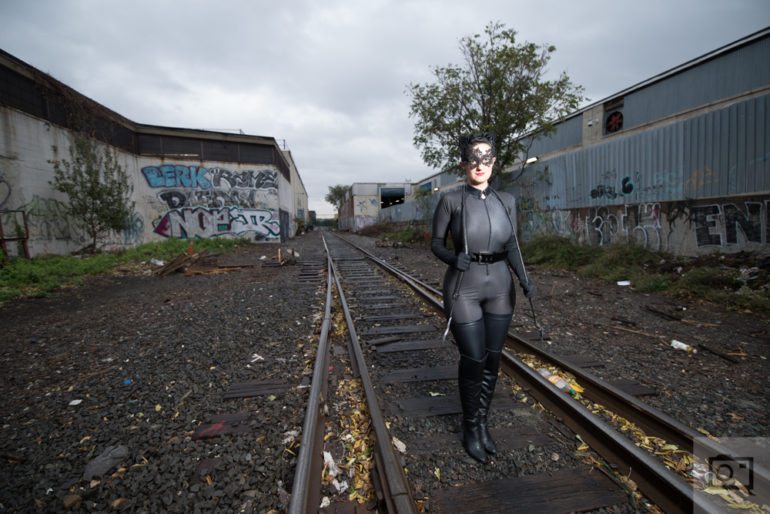
So here’s the original file above. As it is, that’s pretty good. But when you edit the file, you get a lot more out of it.
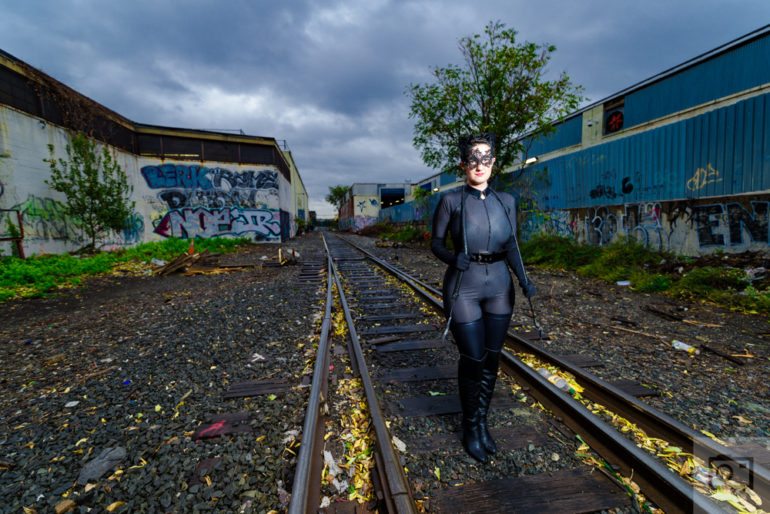
Take a look at what I did with the color and the contrast. Yes, this is a low contrast image, but I got a lot more from the highlights and more from the shadows and colors overall. It’s pretty darned good. However, I’ve been able to get more from Fujifilm and Sony’s files.
Extra Image Samples
In Comparison
Sony has sensors that are more capable than what Pentax can do here with the K-1, and Nikon also has sensors that can do wonderful things. So does Canon.
Overall though, they’re all great. For what it’s worth though, Nikon output requires the least amount of work and massaging to really make the files shine.
Rating
The image quality is good. It isn’t at all bad. But there are more capable sensors on the market these days.
Conclusions
Likes
- Feel
- Courage to do different things
- Features
Dislikes
- There are little things about the feel and interface that just put me off. But that’s just me and my opinion.
Before the acolytes on Pentax Forums and /p/ undoubtedly start to attack me and this site, just know that I think the Pentax K-1 is a great camera. Can it do professional work? Yes, but there are more third party options for lenses and TTL lights available from Canon, Nikon and Sony. Profoto, Phottix, Interfit, and Flashpoint are just a few on top of Zeiss and Tamron. Pentax’s lenses are fantastic, but the third party lens manufacturers are honestly killing it right now.
The Pentax K-1 has fantastic weather sealing, a great interface that mostly keeps your eye in the viewfinder and not on the LCD screen (though I wish the viewfinder were easier to see for those of us with extreme astigmatism) and a very nice build quality overall. The menu is also pretty simple, but Canon trumps it there.
As far as the image quality goes, it surely delivers. You’ll need to work with the files more than you do a Canon, Nikon, or Sony camera’s output. But you’ll get the hang of it.
This camera surely deserves five out of five stars, but I’m not quite ready to give it an Editor’s Choice Award yet. But for what it’s worth, it’s fantastic.


